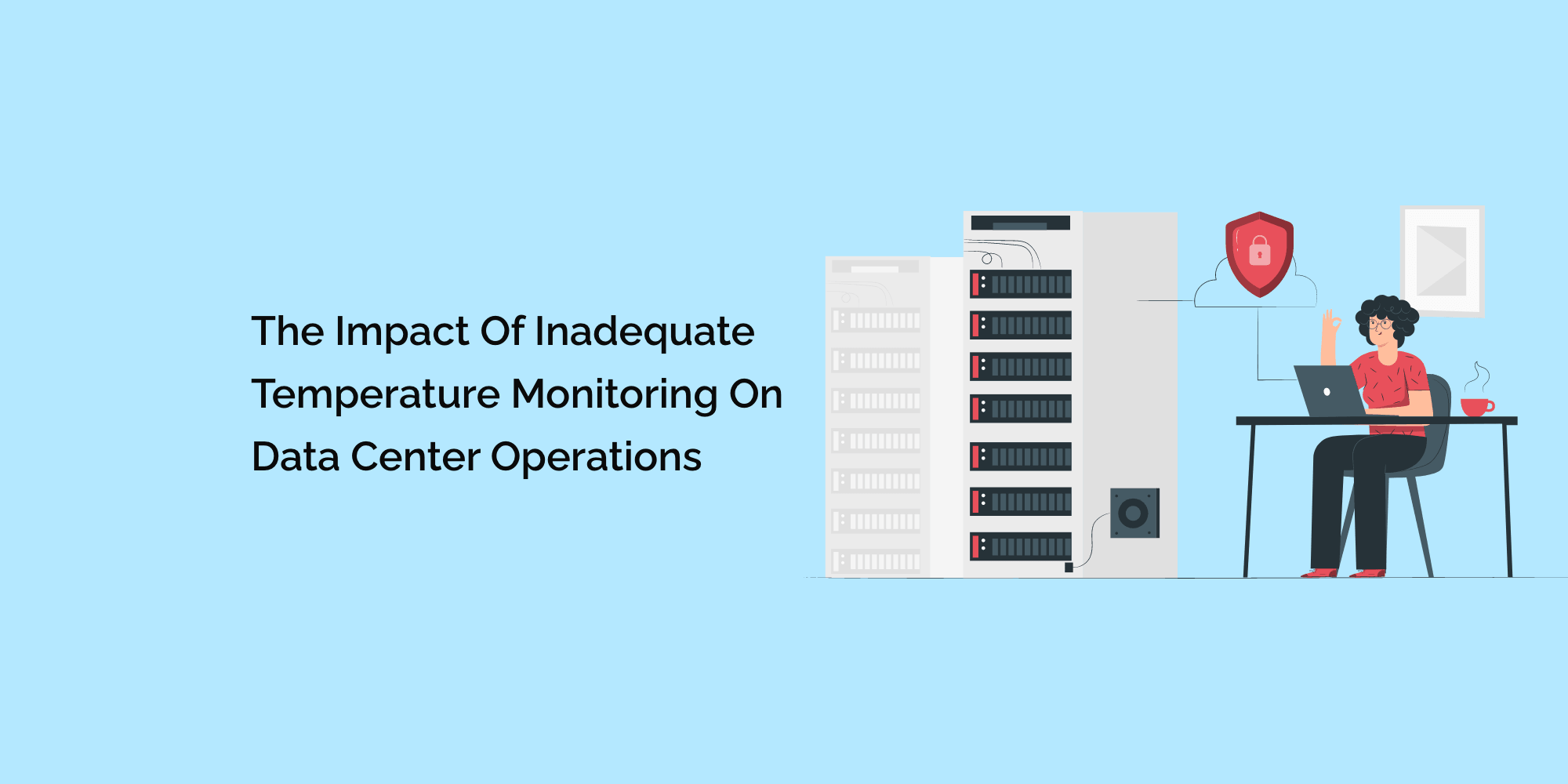Temperature is a critical factor in the efficient and reliable operation of data centers. With the increasing demand for digital services and the proliferation of data-intensive applications, data centers are under constant pressure to deliver optimal performance. Inadequate temperature monitoring can have a profound impact on data center operations, leading to equipment failure, increased downtime, and compromised energy efficiency.
This blog explores the consequences of inadequate temperature monitoring and emphasizes the importance of implementing robust temperature monitoring systems in data centers.
Understanding Temperature Management in Data Centers
The Significance of Temperature in Data Centers
Temperature directly affects the performance and lifespan of data center equipment. Servers, storage devices, and networking equipment generate heat during operation, and maintaining an optimal temperature range is essential for their efficient and reliable functioning. Failure to manage temperatures effectively can result in overheating, thermal throttling, and even permanent damage to critical components.
The Challenges of Temperature Management
Data centers face numerous challenges when it comes to temperature management. High-density server deployments, complex airflow patterns, and varying heat loads make it difficult to achieve consistent and uniform temperatures throughout the facility. Additionally, rapid changes in server loads, equipment failures, or cooling system malfunctions can further complicate temperature management.
Consequences of Inadequate Temperature Monitoring
Equipment Failure and Downtime
Inadequate temperature monitoring increases the risk of equipment failure and subsequent downtime. High temperatures can cause components such as CPUs, memory modules, and hard drives to operate outside their safe operating ranges, leading to performance degradation, system crashes, and even permanent damage. Downtime not only disrupts business operations but also results in financial losses and damage to the organization's reputation.
Increased Energy Consumption and Costs
Inefficient temperature management leads to increased energy consumption and operational costs. If temperatures are not properly monitored and controlled, cooling systems may run continuously or work harder than necessary, consuming excessive energy.
In turn, this drives up electricity bills and reduces the overall energy efficiency of the data center. Inadequate temperature monitoring can prevent data center operators from identifying energy-saving opportunities and implementing targeted optimizations.
Impact on Hardware Lifespan
Higher operating temperatures can significantly impact the lifespan of data center hardware. Exposing equipment to elevated temperatures reduces its reliability and longevity. Components that experience thermal stress are more prone to failure, resulting in frequent replacements and increased capital expenditure.
Proper temperature monitoring allows for timely identification of hotspots and enables proactive measures to mitigate potential risks, extending the lifespan of critical hardware.
The Importance of Robust Temperature Monitoring Systems
Real-Time Monitoring and Alerting
Real-time temperature monitoring is essential for identifying temperature fluctuations, hotspots, or cooling system failures promptly. Continuous monitoring systems equipped with sensors placed strategically throughout the data center provide a comprehensive view of temperature distribution.
Coupled with intelligent alerting mechanisms, data center operators can be immediately notified of any temperature anomalies, enabling them to take immediate corrective actions.
Environmental Monitoring and Predictive
Analytics In addition to temperature monitoring, data centers can benefit from comprehensive environmental monitoring systems. These systems track factors such as humidity, air quality, and airflow patterns, providing a holistic understanding of the data center environment.
Leveraging predictive analytics, data center operators can anticipate temperature variations, plan for capacity changes, and optimize cooling system performance to ensure optimal conditions.
Integration with Data Center Infrastructure Management (DCIM)
Integrating temperature monitoring systems with Data Center Infrastructure Management (DCIM) platforms can streamline data collection, analysis, and reporting. DCIM solutions provide centralized visibility into various data center parameters, including temperature.
This integration enables data center operators to gain actionable insights, optimize cooling strategies, and make informed decisions based on real-time temperature data. It also facilitates the correlation of temperature information with other critical data center metrics, such as energy consumption and equipment performance.
Remote Monitoring and Management
Remote temperature monitoring solutions offer the flexibility of monitoring and managing data center temperatures from anywhere, at any time. These systems provide real-time access to temperature data, alerts, and historical trends, allowing data center operators to respond promptly to temperature fluctuations or critical events.
Remote monitoring enhances operational efficiency and minimizes the risk of human error by enabling proactive temperature management even when staff is not physically present on-site.
Conclusion
Inadequate temperature monitoring in data centers can have far-reaching consequences, impacting equipment performance, increasing downtime, and escalating operational costs. The significance of temperature management cannot be understated in ensuring the efficient and reliable operation of data centers.
Implementing robust temperature monitoring systems is paramount to mitigating these risks. Real-time monitoring, alerting, and integration with DCIM platforms enable data center operators to proactively address temperature anomalies, prevent equipment failure, and optimize energy consumption. Comprehensive environmental monitoring and predictive analytics provide valuable insights for capacity planning and cooling system optimization.
Remote monitoring and management solutions further enhance the flexibility and efficiency of temperature management, allowing data center operators to monitor and address temperature-related issues from anywhere, at any time.
By investing in reliable temperature monitoring systems, data center operators can optimize equipment performance, minimize downtime, and enhance energy efficiency. Proactive temperature management improves hardware lifespan, reduces operational costs, and ultimately contributes to a more sustainable and reliable data center infrastructure.
In conclusion, the impact of inadequate temperature monitoring on data center operations can be severe. Temperature fluctuations, hotspots, and equipment failures can result in significant financial losses, compromised reliability, and increased energy consumption. Implementing robust temperature monitoring systems is essential for data center operators to maintain optimal performance, prevent equipment failures, and optimize energy efficiency.
By prioritizing temperature monitoring and management, data centers can enhance operational efficiency, reduce costs, and improve overall reliability. Embracing these best practices ensures the seamless functioning of data centers and supports the growing demand for digital services in an increasingly data-driven world. Let us commit to implementing robust temperature monitoring systems and maintaining the integrity of our data centers for a more resilient and sustainable digital future.








